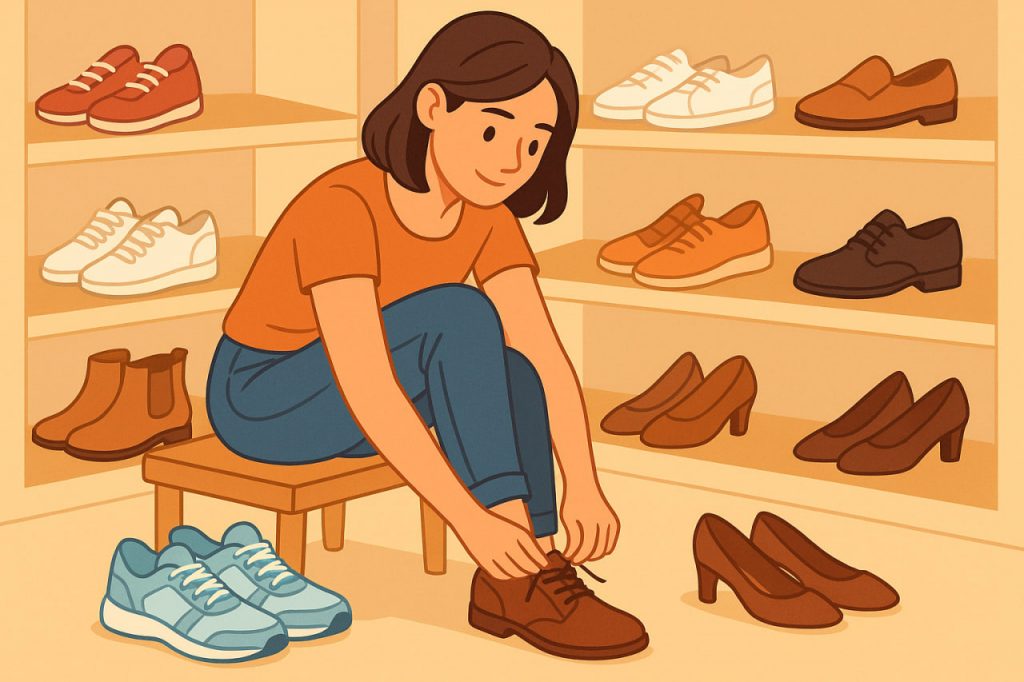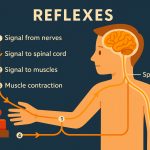Choosing the right shoes is more than a matter of fashion — it’s essential for comfort, posture, and overall health. The right pair can prevent joint pain, fatigue, and long-term foot problems, while also complementing your style. With so many options available today, knowing what to look for helps you make a smart, healthy, and lasting choice.
The Importance of Proper Footwear
Feet carry the entire weight of the body and absorb the impact of every step. Poorly fitted shoes can lead to blisters, calluses, bunions, flat feet, and even back pain. Meanwhile, well-chosen shoes support the natural shape of the foot, improve balance, and reduce strain on muscles and joints.
Proper footwear also influences body posture. A well-designed sole aligns the spine and distributes body weight evenly, making walking or standing for long periods far more comfortable.
Step 1: Understand Your Foot Type
Everyone’s feet are unique. Before buying shoes, identify your foot shape and arch type:
- Flat feet: Require shoes with strong arch support to prevent overpronation.
- Normal arches: Benefit from flexible, cushioned soles that balance comfort and stability.
- High arches: Need extra cushioning to absorb shock during walking or running.
You can test your arch at home — wet your foot and step on paper. A full print indicates a flat foot; a narrow connection between heel and toe means a high arch.
Step 2: Choose the Right Size and Fit
Never buy shoes that are too tight, expecting them to stretch. Your toes should have at least 0.5–1 cm of space at the front, and the heel should fit snugly without slipping. Always try on both shoes, as one foot is often slightly larger than the other.
If you shop online, check size guides carefully — different brands may vary. The best time to try on shoes is in the afternoon, when your feet are slightly larger due to daily swelling.
Step 3: Select the Right Material
High-quality materials ensure comfort, breathability, and durability:
- Leather: Adapts to your foot shape and allows ventilation.
- Textile or mesh: Ideal for sports and hot weather due to lightness and breathability.
- Synthetic materials: Affordable and waterproof but less flexible — suitable for occasional use.
Step 4: Consider Shoe Purpose
Each activity requires specific footwear design:
- Casual walking: Look for soft soles and good cushioning.
- Running or sports: Choose lightweight athletic shoes with shock absorption and arch support.
- Formal wear: Leather shoes with a comfortable insole and stable heel.
- Outdoor or hiking: Shoes with waterproof coating, ankle support, and rugged soles.
Wearing shoes designed for the right purpose prevents fatigue and extends the life of your footwear.
Step 5: Pay Attention to Sole and Support
The sole is the most important part of any shoe. It should be flexible in the toe area but firm enough to provide support. Check for:
- Arch support: Keeps your foot in a natural position.
- Shock absorption: Reduces pressure on knees and joints.
- Grip: A textured outsole prevents slipping, especially on wet or uneven surfaces.
Step 6: Style Meets Comfort
While comfort comes first, style also matters. Modern footwear technology allows brands to combine health benefits with aesthetics. Neutral colors like black, white, or beige match most outfits, while bold tones express personality. Always choose a pair that reflects your lifestyle and makes you feel confident.
Shoe Care and Maintenance
Good shoes last longer with proper care:
- Clean them regularly and dry naturally — never near direct heat.
- Use shoe trees to maintain shape.
- Replace worn-out insoles and soles when needed.
- Store shoes in a dry, ventilated place.
Interesting Facts
- The average person takes around 8,000–10,000 steps per day, putting tremendous stress on their feet.
- Ill-fitting shoes are responsible for over 70% of foot problems in adults.
- Leather shoes can expand by up to 5% after several wears.
- Running shoes should be replaced every 600–800 kilometers to maintain performance.
Glossary
- Arch support — structural design in the sole that supports the foot’s natural curve.
- Overpronation — excessive inward rolling of the foot during walking or running.
- Shock absorption — the ability of a sole to reduce impact on joints.
- Outsole — the external bottom part of the shoe that contacts the ground.
- Shoe tree — a device inserted into shoes to maintain their shape and prevent creases.


